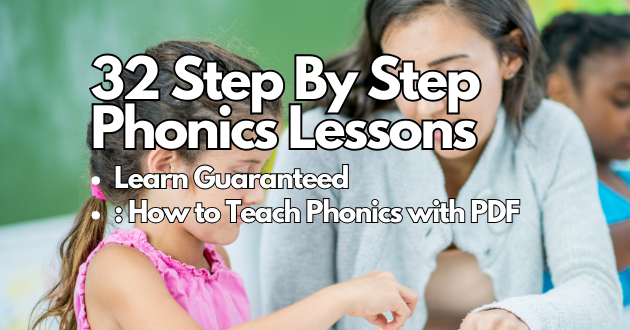32 Step By Step Phonics Lessons is a comprehensive guide designed to help learners master the intricacies of phonics. This valuable resource provides a organized method allowing people of all ages and backgrounds to easily understand the principles of phonics and utilize them in their reading and writing. With its systematic approach this handbook guarantees to be an asset, for teachers, parents and students alike.
What Are Phonics Lessons?
Phonics lessons are teaching sessions that concentrate on the connection, between letters (and combinations of letters) in written language and the sounds they symbolize in language. The main objective of phonics instruction is to assist students in decoding or pronouncing words, which’s crucial, for reading.
Are Phonics Still Taught in Schools?
Yes phonics continues to be a part of teaching literacy, in schools. The 32 Step By Step Phonics Lessons exemplify a method for instructing phonics guaranteeing that students understand how letters and sounds are connected, which is vital, for their reading progress.
Are Phonics And Spelling The Same?
No phonics and spelling are not identical. Phonics involves studying the connection, between letters and the sounds they represent as demonstrated in the 32 Step By Step Phonics Lessons. On the hand spelling centers, around arranging letters to create words. Nevertheless having an understanding of phonics can greatly enhance ones spelling abilities.
How Much Time Should Be Spent On Phonics Instruction?
The duration of phonics instruction can differ depending on the curriculum and the specific requirements of students. Nevertheless it is commonly suggested that young readers allocate, around 20 to 30 minutes each day for phonics related exercises. Programs like 32 Step By Step Phonics Lessons provide structured guidance, ensuring that this time is used effectively.
What Are The 3 Principles Of Phonics Instruction?
The principles that form the foundation of phonics instruction include;
- Systematic and Clear Instruction; Phonics skills are taught in a structured and organized manner following a sequence as demonstrated in the 32 Step By Step Phonics Lessons.
- Application; Students are provided with opportunities to apply their acquired knowledge through reading and writing exercises.
- Multisensory Approach; Multiple senses, such, as sight, sound and touch are utilized to improve memory retention and facilitate learning.
Why is Phonics Instruction Important To Reading Success?
Learning phonics, such, as the 32 Step By Step Phonics Lessons plays a role in achieving reading success. It equips students with the skills to words by recognizing the connection, between letters and their corresponding sounds. This ability enables them to confidently tackle words ultimately improving their reading fluency and understanding.
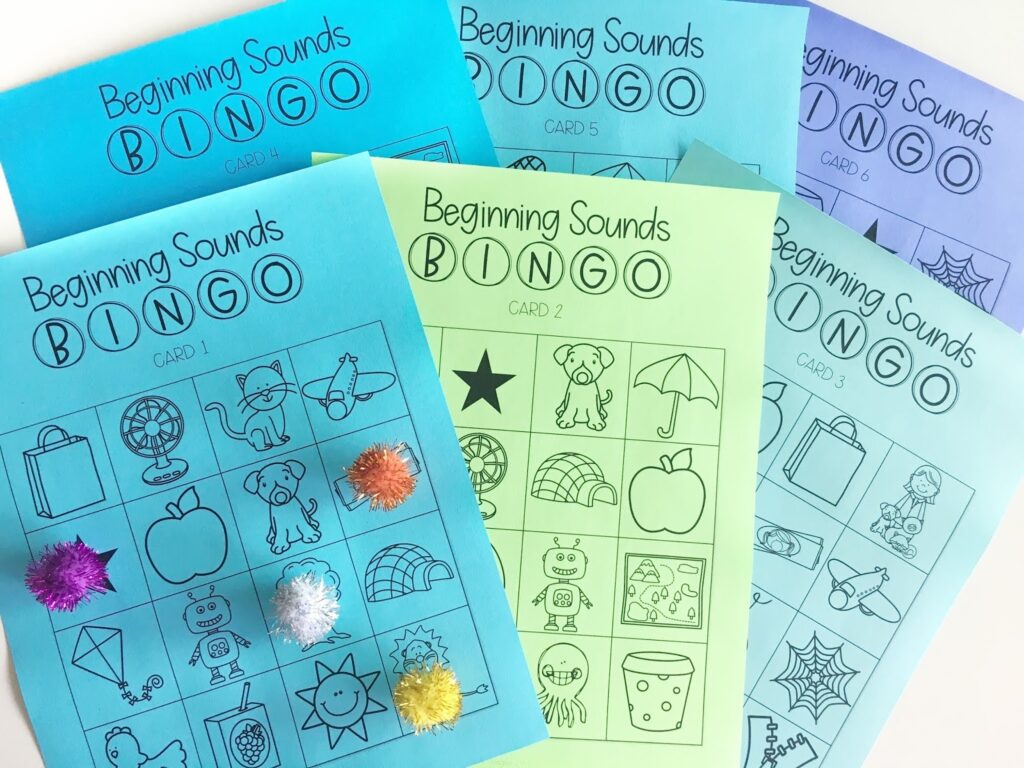
Why Phonics Instruction Is Important?
Phonics instruction is incredibly important as it forms the basis, for developing reading abilities. It enables students to decipher words resulting in reading fluency, understanding and overall literacy skills. A structured approach, such as the 32 Step By Step Phonics Lessons, ensures that students receive comprehensive phonics training.
Why Teach Phonics in Kindergarten?
In kindergarten teaching phonics plays a role, in laying the foundation for reading success at an age. At this stage children are especially receptive to acquiring knowledge about the sounds associated with each letter of the alphabet. By introducing them to a structured program such as 32 Step By Step Phonics Lessons we can ensure that they develop a groundwork, for their future reading and writing abilities.
32 Step By Step Phonics Lessons
Lesson 1: The Alphabet
To begin teaching phonics it is important to start with the alphabet. This initial step helps learners recognize and name the letters of the alphabet.
- Begin by chanting the alphabet and encouraging learners to join in.
- Show them the alphabet letters. Ask them to identify each one.
- Motivate learners to practice writing the letters.
- Get involved, in activities that revolve around the alphabet, such, as playing “Letter Hunt” or “Alphabet Bingo.”
Lesson 2: Consonants
In the 32 Step By Step Phonics Lessons the next phase focuses on consonants. This particular step helps learners, in identifying and naming consonant sounds.
- Begin by vocalizing the sounds of consonants.
- Prompt learners to identify and name these sounds.
- Encourage practice in writing consonants.
- Participate in activities such, as “Consonant Hunt” or “Consonant Pairing.”
Lesson 3: Vowels
In the 32 Step By Step Phonics Lessons the third step focuses on vowels. This step helps learners differentiate and identify vowel sounds.
- Begin by vocalizing the sounds of vowels.
- Guide learners to recognize and name vowels.
- Promote practice, in writing vowels.
- Participate in activities such, as “Vowel Hunt” or “Vowel Pairing.”
Lesson 4: CVC Words
Step four focuses on introducing CVC (vowel consonant) words, which helps learners understand how sounds come together to form words.
- Start by presenting CVC words and having learners repeat them.
- Break down the letters, in each CVC word. Guide learners in blending the sounds
- Encourage practice with writing CVC words.
- Engage in activities such, as “Word Grouping” or “Word Creation.”
Lesson 5: Short Vowels
In the 32 Step By Step Phonics Lessons the fifth step focuses on vowels. This step helps learners recognize the sounds of vowels, in CVC words.
- Start by introducing vowels and say their sounds aloud allowing learners to repeat after you.
- Guide learners in identifying short vowel sounds within CVC words.
- Encourage writing practice with CVC words that contain vowels.
- Engage in fun activities like “Short Vowel Pairing” or “Short Vowel Bingo.”
Lesson 6: Long Vowels
In the step we will teach learners about vowels. This will help them recognize and name the sounds of vowels.
- We will start by introducing vowels and having learners repeat the sounds.
- Then we’ll guide them in identifying words, with vowel sounds.
- It’s important to encourage practice in writing words with vowels.
- To make learning engaging we can incorporate activities, like “Long Vowel Pairing”. Play a game of “Long Vowel Bingo.”
Lesson 7: Blends
In the 32 Step By Step Phonics Lessons we reach the step which focuses on blends. This step is designed to help learners recognize blends within words.
- To introduce blends start by saying them and have learners repeat after you.
- Guide learners, in identifying words that contain blends.
- Encourage practice writing words with blends.
- Engage in fun activities, like “Blend Bingo” or “Blend Grouping.”
Lesson 8: Digraphs
In step eight we introduce digraphs to help learners recognize and name them in words.
- Lets start by introducing digraphs and having learners repeat them.
- Next we can guide learners in identifying digraphs within words.
- To reinforce their understanding encourage writing practice using words, with digraphs.
- Engage in fun activities, like “Digraph Pairing” or “Digraph Bingo” to make learning digraphs more interactive.
Lesson 9: Silent E
The ninth lesson, in the 32 step Phonics Lessons focuses on the rule of E. This lesson helps learners grasp how silent E affects word pronunciation.
- Begin by introducing the concept of E pronouncing a word with silent E and having learners repeat after you.
- Guide learners to add E to words and pronounce them accurately.
- Encourage writing practice using words with E.
- Involve learners in activities like grouping words with E or creating new words, with silent E.
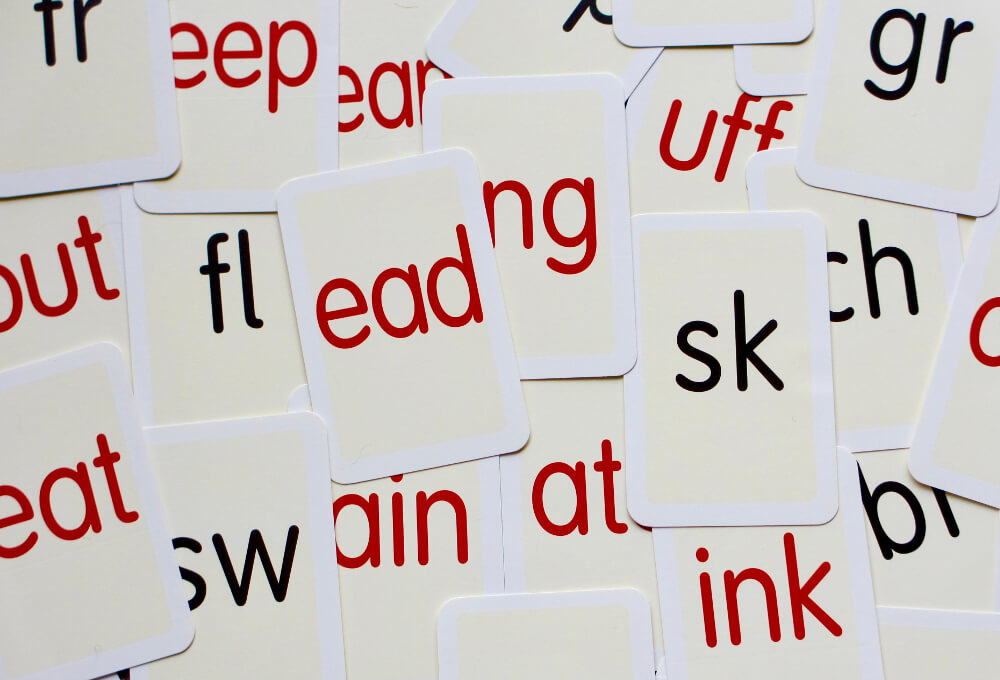
Lesson 10: R-Controlled Vowels
In the step we introduce R controlled vowels. This helps learners to recognize and name R controlled vowels, in words.
- We start by introducing R controlled vowels and saying a word that contains one have learners repeat it.
- Next we guide learners in identifying R controlled vowels in words.
- We also encourage them to practice writing words with R controlled vowels.
- Finally we engage in fun activities, like “R Controlled Vowel Pairing” or “R Controlled Vowel Bingo.”
Lesson 11: Vowel Teams
In the 32 Step By Step Phonics Lessons the eleventh step focuses on grasping the concept of vowel teams. This particular lesson is designed to help students identify and locate vowel teams, within words.
- To introduce vowel teams start by saying a word that contains a vowel team and encourage students to repeat it.
- Next guide students in finding teams in words.
- Then assist students in practicing writing words that include vowel teams.
- Lastly involve students in activities such, as “Vowel Team Grouping” or “Vowel Team Creation.”
Lesson 12: Diphthongs
In the step of our 32 Step By Step Phonics Lessons we introduce diphthongs. This particular lesson is crafted to assist students, in identifying and recognizing diphthongs within words.
- To showcase diphthongs, start by pronouncing a word that contains a diphthong and have the students repeat after you.
- Encourage them to search for diphthongs in words.
- Guide them in practicing writing words that include these vowel combinations.
- Additionally engage them in games such, as “Diphthong Pairing” or “Diphthong Challenge.”
Lesson 13: Compound Words
In the 32 Step By Step Phonics Lessons we reach the step which focuses on compound words. This particular lesson aims to help students grasp how two separate words come together to create a compound word.
- To start I would say a compound word aloud. Ask the students to repeat after me.
- Next I would assist the students in recognizing examples of compound words.
- Then I would guide them in practicing how to write compound words.
- Lastly we can engage in activities such, as “Compound Word Linking” or “Compound Word Formation.”
Lesson 14: Homophones
Step number fourteen, in the series of 32 Phonics Lessons involves exploring homophones. This particular lesson aims to educate students about words that sound alike but possess meanings and spellings.
- Begin by pronouncing a homophone and requesting students to repeat it.
- Motivate students to recognize homophones.
- Assist students in practicing the act of writing homophones.
- Engage in activities such, as “Homophone Pairing” or “Homophone Quest.”
Lesson 15: Syllables
In the phase of the 32 step phonics lessons students are introduced to a topic called “syllables.” This particular lesson aims to help students grasp the concept of breaking words down into syllables.
- To demonstrate syllables start by saying a word and clapping, for each syllable.
- Assist students in breaking words into syllables.
- Guide students in practicing how to write words with syllables.
- Take part in activities such, as “Syllable Division” or “Syllable Tally.”
Lesson 16: Prefixes
In the 32 Step By Step Phonics Lessons the sixteenth step focuses on prefixes. This particular lesson aims to help students grasp the concept of how prefixes can change the meaning of words.
- To introduce prefixes start by saying a word, with a prefix and asking the students to repeat it.
- Next encourage them to identify prefixes in words.
- Guide them through exercises where they write words that include prefixes.
- Engage in games, like “Prefix Linking” or “Prefix Creation.”
Lesson 17: Suffixes
In the 32 Step By Step Phonics Lessons we reach the step where we explore the topic of suffixes. This particular lesson aims to educate students, about how suffixes can bring changes to the meaning of words.
- To demonstrate the concept of suffixes start by saying a word with a suffix and encourage students to repeat it.
- Help students identify suffixes in words.
- Guide students through exercises where they practice writing words that contain suffixes.
- Engage in activities such, as “Suffix Pairing” or “Suffix Formation.”
Lesson 18: Contractions
In the 32 Step By Step Phonics Lessons the eighteenth step focuses on contractions. This particular lesson aims to help students comprehend how two words combine to form a contraction.
- To begin we can introduce contractions by pronouncing one and having the students repeat after us.
- After that we can encourage them to identify contractions and guide them in practicing writing these contractions.
- To make the learning process more engaging we can also include games such, as “Contraction Linking” or “Contraction Creation.”
Lesson 19: Multi-Syllable Words
In the 32 Step By Step Phonics Lessons the nineteenth step focuses on teaching students how to handle syllable words. This specific lesson aims to help students break down and read words.
- To demonstrate syllable words start by pronouncing a word with multiple syllables and clap, for each syllable. This will provide an example.
- Next guide students in segmenting these words into their syllables. Encourage them to identify and separate each syllable.
- Finally assist students in reading syllable words by practicing together. Offer guidance and support as they navigate through these word structures.
- As an activity consider incorporating exercises, like “Extended Word Division” or “Extended Word Formation” to further reinforce their understanding of syllable words.
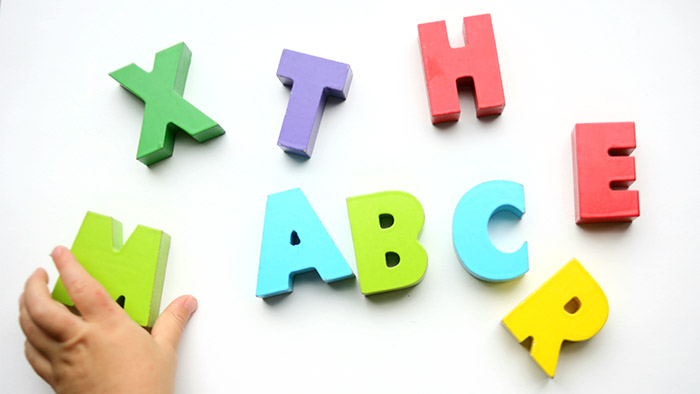
Lesson 20: Sight Words
In the 32 Step By Step Phonics Lessons the twentieth step focuses on sight words. This particular lesson aims to help students become familiar, with and read sight words that do not follow phonics rules.
- To introduce sight words start by saying one aloud and have the students repeat it back.
- Motivate the students to identify and read sight words.
- Assist the students in practicing how to write sight words.
- Engage in fun activities, like “Sight Word Pairing” or “Sight Word Quest.”
Lesson 21: Reading Fluency
In the 32 step Phonics Lessons the first step highlights the importance of improving reading fluency. It aims to assist students in reading and, with expression.
- Motivate students to read excerpts of text.
- Provide feedback on their reading fluency paying attention to factors such as speed, tone and intonation.
- Organize group reading sessions to further enhance fluency skills.
- Participate in activities, like ” Reading Relay” or “Fluency Face off.”
Lesson 22: Reading Comprehension
In the 32 Step By Step Phonics Lessons the twenty second step is, about improving reading comprehension. This particular lesson helps students understand and make sense of what they read.
- To begin with guide the students to read a passage and then answer questions about what they’ve read. It’s important to teach them techniques for improving reading comprehension, such as asking questions making connections and summarizing.
- As the lesson progresses, introduce texts for them to read along with more advanced comprehension questions. This will challenge them. Help enhance their understanding.
- To make learning fun consider incorporating games like “Comprehension Quest” or “Reading Insight Relay”, into the activities.
Lesson 23: Writing Skills
Step 23, in the series of 32 Phonics Lessons focuses on developing writing skills. This particular lesson empowers students to apply the phonics techniques they have learned in their writing.
- Encourage students to practice writing words and sentences utilizing their understanding of phonics.
- Provide feedback on grammar, punctuation and spelling to help improve their writing accuracy.
- Organize longer writing sessions to allow for practice.
- Incorporate fun activities, like “Writing Duels” or “Creative Writing Prompts” to make the learning experience enjoyable.
Lesson 24: Vocabulary Development
In the 32 Step By Step Phonics Lessons the twenty fourth step focuses on improving skills. This particular lesson aims to help students learn words and expand their range of vocabulary. Here’s how this step works;
- Start by introducing words giving their definitions and providing examples of how they’re used.
- Guide students, in using these newly learned words in sentences.
- Help them identify synonyms and antonyms for the introduced words.
- Engage students in interactive games, like “Word Association” or “Vocabulary Expansion.”
Lesson 25: Reading Aloud
Step 25 of the 32 Phonics Lessons takes a look, at the importance of reading. This particular lesson aims to help students gain confidence and clarity when vocalizing written text.
Here are some suggestions to encourage students to read
- Encourage them to read excerpts out loud.
- Provide feedback on their volume, tone and clarity while reading aloud.
- Help them navigate through passages of text.
- Engage in activities, like an “Aloud Reading Marathon” or a “Dramatic Reading Theater.”
Lesson 26: Phonemic Awareness
In the 32 Step By Step Phonics Lessons the twenty sixth step focuses on developing awareness. This particular lesson aims to assist students in recognizing and manipulating sounds within words.
- Begin by saying a word and ask students to identify each individual sound, within it.
- Lead students in changing sounds in words like adding or removing sounds.
- Engage students in writing activities where they spell words based on identifying sounds.
- Participate in games such, as “Sound Association” or “Phonemic Building.”
Lesson 27: Decoding Strategies
In the phase of the 32 step Phonics Lessons students will be introduced to strategies, for decoding words. This lesson aims to provide students with methods to understand and make sense of words.
- Teach a range of decoding techniques, such as looking for clues in the context breaking down words into parts and using reading.
- Encourage students to apply these decoding techniques when faced with words.
- Provide feedback that is tailored to types of words focusing on their use of decoding techniques.
- Engage students in fun activities, like “Decoding Duel” or “Mystery Word Unravel.”
Lesson 28: Reading Genres
The twenty-eighth step in 32 Step By Step Phonics Lessons explores reading genres. This lesson helps students delve into various literary types and cultivate reading preferences.
- Encourage students to explore a variety of reading genres, including fiction, nonfiction, poetry and biographies.
- Guide them in reading and discussing samples from each genre.
- Provide opportunities for students to choose and read materials from their preferred genres.
- Engage in activities such, as “Genre Quest” or “Genre Pairing.”
Lesson 29: Fluency Practice
The twenty-ninth step in 32 Step By Step Phonics Lessons emphasizes fluency practice. This lesson helps students improve their reading fluency by focusing on expressing themselves
- Support students as they read passages of text providing feedback on their fluency.
- Lead group reading sessions to enhance fluency and expression.
- Motivate students to record their readings enabling self assessment of fluency.
- Participate in activities such, as the “Fluency Track” or the “Expressive Reading Challenge.”
Lesson 30: Comprehension Strategies
The thirtieth step focuses on comprehension strategies. This lesson teaches students how to understand the meaning of texts.
- We will introduce techniques, for comprehension, such as making predictions asking questions, summarizing and visualizing.
- We will guide students in using these strategies to understand the meaning of texts.
- We will provide feedback on the use of comprehension strategies that’re specific to types of texts.
- We will also engage in activities, like “Meaning Quest” or “Text Insight Challenge.”
Lesson 31: Vocabulary Strategies
The thirty-first step in 32 Step By Step Phonics Lessons is about vocabulary strategies. In this lesson students will learn methods, for acquiring and using vocabulary.
- We will start by exploring techniques such as using context clues understanding word roots and making use of dictionaries.
- Next students will practice applying these strategies to expand their word knowledge.
- I will provide feedback on their use of strategies based on the specific types of words they encounter.
- Additionally we will engage in activities, like “Word Hunt” or “Lexicon Detective.”
Lesson 32: Assessment and Review
The final step in 32 Step By Step Phonics Lessons revolves around assessment and review. This lesson allows students to revisit the phonics skills they’ve acquired and gauge their progress.
- Encourage students to engage in activities and tasks that reinforce their phonics skills, such, as games and reading/writing exercises.
- Make use of types of assessments both informal to gauge how students are progressing and identify specific areas where they may need extra support.
- Offer feedback on their phonics abilities emphasizing the importance of practice for ongoing improvement.
- Celebrate students accomplishments, by providing rewards and positive reinforcement as a way to motivate them further.
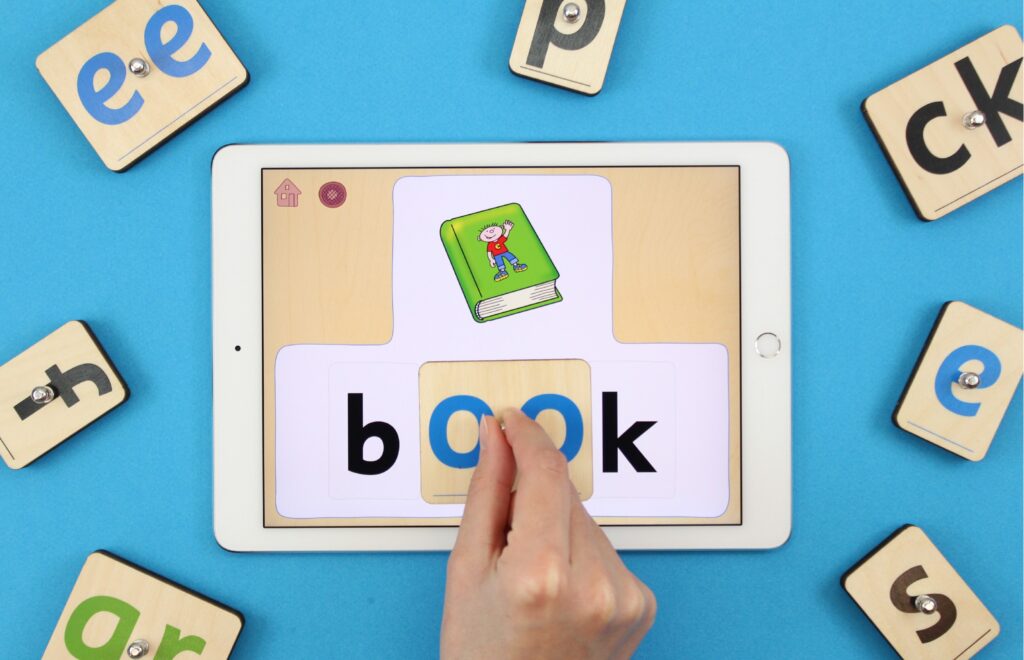
What Are Some Common Phonics Rules?
There are phonics rules, including the rule, about silent E, the rule for consonant vowel consonant (CVC) words rules for long and short vowels the rule concerning R controlled vowels and the rule, for vowel teams.
How can I Teach Phonics To My Child At Home?
You can teach your child phonics skills at home using activities, reading and writing exercises. It’s also helpful to utilize resources, like phonics workbooks platforms dedicated to phonics and educational apps.
How can I Assess My Child’s Phonics Skills?
You can assess your childs phonics abilities using both informal methods, such, as tests that measure reading fluency assessments of decoding skills and comprehension well as analyzing their writing samples.
What Are Some Tips For Teaching Phonics Effectively?
One of the aspects of teaching phonics is to ensure that the learning process is engaging and interactive. It’s important to use a variety of teaching methods and materials as provide plenty of opportunities, for practice with feedback. Additionally it’s essential to acknowledge and celebrate the accomplishments of learners, along the way.
How Long Does It Take To Learn Phonics?
The time it takes to become proficient, in phonics can vary depending on factors such as age, teaching methods and previous knowledge. However with effective guidance most students can acquire phonics skills within a months, to a year.
What is The Difference Between Phonics And Phonemic Awareness?
Understanding phonics involves grasping the connection, between sounds and letters whereas phonemic awareness focuses on recognizing and manipulating sounds within words. Phonemic awareness is a skill that is taught prior, to delving into phonics instruction.
Are There Any Downsides To Teaching Phonics?
One potential downside of teaching phonics is the possibility of placing emphasis on decoding which could hinder the development of well rounded reading abilities. However when combined with reading techniques phonics can play a role, in fostering skilled readers.
Can Phonics Be Taught To English Language Learners?
Certainly English language learners can be taught phonics through strategies that are customized based on their level of language proficiency. The incorporation of aids and contextual cues can prove to be especially beneficial, in this regard.
What Are Some Resources For Teaching Phonics?
There are resources that you can use to teach phonics, such, as workbooks, online platforms, educational apps and interactive activities. It’s also helpful to seek guidance from reading specialists and educational experts, for insights.
What Should a Phonics Lesson Include?
Incorporating techniques from “32 Step By Step Phonics Lessons“, a phonics lesson should have a structured approach.
- The lesson begins with an introduction that reviews sounds or letters that students have already learned.
- Next the teacher introduces a sound or letter pattern using aids or manipulatives to make it easier to understand. Students then practice the sound or letter pattern by reading words or sentences.
- Finally the lesson ends with an application phase where students are encouraged to read texts that include the sound or letter pattern, followed by an assessment to gauge their comprehension.
What Makes a Good Phonics Lesson?
When it comes to teaching phonics, a structured lesson that follows a sequence is essential. It’s important to keep students engaged through hands on activities while also providing opportunities, for repetition and practice.
Using techniques can enhance the learning experience. Additionally it’s crucial to tailor instruction to meet the needs of all learners and incorporate real world examples to make learning meaningful.

How Do You Write a Phonics Lesson Plan?
When crafting a phonics lesson plan, especially one inspired by “32 Step By Step Phonics Lessons“, start with a clear objective of what students should achieve by the end of the lesson. Please provide a list of all the materials and resources that are required.
In the introduction explain how the sound or letter pattern will be introduced. Then provide teaching methods and activities, for instruction. Next outline. Games that can be used for practice methods for assessment. End the lesson, with a closure to summarize what was taught.
What Do You Look For When Observing a Phonics Lesson?
When you observe a phonics lesson, one that follows the format of “32 Step By Step Phonics Lessons ” it is important to pay attention to aspects. Look for instructions and explanations, about the sounds or letter patterns being taught. Also notice if the teacher incorporates multisensory teaching techniques to engage students in ways.
It’s crucial to observe how actively involved the students are and whether they have opportunities to practice and reinforce what they’ve learned. Another key aspect is classroom management making sure that the lesson runs smoothly and all students are, on task. Lastly consider how well the lesson caters to diverse learners through differentiation strategies.
Sample Phonics Lesson Plan
A sample lesson plan, inspired by “32 Step By Step Phonics Lessons“, might have an objective where students learn the “sh” sound. For this lesson you will need an items; flashcards, a list of words containing the “sh” sound and a story that includes words, with that sound.
We’ll begin by introducing the “sh” sound using a picture of a ship to help us. Then we’ll move on to instruction and practice. To assess their understanding students will read a story. Mark all the words, with the “sh” sound. Finally we’ll wrap up with a review of what they’ve learned about this sound.
Second Grade Phonics Lesson Plan
A lesson plan designed for second grade students could utilize the book “32 Step By Step Phonics Lessons” to teach them about the “sound, as in the word “rain.” The materials needed for this lesson would include flashcards, a list of words containing the “sound and a story featuring words with “ai.”
To start off the lesson would begin with an introduction using a picture related to rain. Then students would receive instruction on how to use words, with the “sound, followed by practice exercises. Finally their understanding of the concept would be assessed through writing sentences using words that contain the “sound.
How to Get an Outstanding Phonics Lesson?
To create an phonics lesson, particularly one aligned with the “32 Step By Step Phonics Lessons” approach it is crucial to have thorough preparation. Make sure the lesson is well organized and appropriately paced. Engage students through activities tailor instruction, to their needs incorporate multisensory techniques and consistently evaluate their progress.
What Is the Sequence of an Explicit Phonics Lesson?
An explicit phonics lesson, especially one based on “32 Step By Step Phonics Lessons“, typically follows a sequence starting with a review of previously learned sounds or letters. After that we move on to introducing a sound or letter pattern. We practice blending sounds to create words decoding to read words, with the pattern encoding to spell or write words and finally applying the new sound or letter pattern while reading texts.
Where to Watch Leapfrog Phonics Farm?
“Leapfrog Phonics Farm” is not exactly connected to “32 Step By Step Phonics Lessons “. You can find it available, for streaming on platforms like Amazon Prime and Netflix. Alternatively you may also come across DVDs of the show, on the Leapfrog website, local stores or even libraries.
Jolly Phonics Lesson Plans PDF
Jolly Phonics is a program that takes a hands on approach to help children learn to read and write. The “Jolly Phonics Lesson Plans PDF” is usually a resource that offers instructions, on how to incorporate the Jolly Phonics method in the classroom. It covers all 42 sounds of the language offering engaging activities, songs and stories that correspond with each sound.

Kindergarten Phonics Lesson
In a phonics class, for children at a kindergarten level the focus is on introducing them to the sounds of language. This is done through interactive activities like songs, rhymes and games. The lesson typically starts with a up activity to capture the students attention followed by introducing a new sound or letter.
Students then take part in activities that help them practice the sound, such, as matching pictures with sounds tracing letters or blending words. To wrap up the lesson, a story or song incorporating the sound is shared with the students so they can apply what they have learned in a meaningful way.
Free Printable Phonics Lesson Plans
Printable phonics lesson plans that can be freely obtained are incredibly useful, for both teachers and parents. These plans offer a organized method for teaching phonics, including goals, necessary materials, engaging activities and effective assessments.
They are conveniently accessible. Can be easily printed for use either in the classroom or at home. These lesson plans cover a range of phonics topics starting from letter sound associations to more advanced skills, like blending and segmenting.
ESL Phonics Lesson Plans
Teaching phonics to individuals who are learning English as a language (ESL) presents challenges as these students may already have literacy skills in a different language, with distinct phonetic rules. ESL phonics lesson plans are specifically designed to address the needs of these learners.
The lessons would commence by introducing the sounds of English and their corresponding letters. Interactive activities such as listening exercises, repetition drills and games would be incorporated to reinforce pronunciation skills.
As students progress the lessons would encompass phonetic patterns and provide opportunities, for practicing reading and writing in English. For educators working with ESL students it is essential to remain patient and offer practice sessions since mastering phonics can be a demanding yet fulfilling journey.
Final Thought
The 32 Step By Step Phonics Lessons provides a clear and concise roadmap for mastering phonics. By following the instructions provided in this guide individuals can improve their reading speed, understanding and overall language proficiency. Whether you are an educator looking for teaching methods or a student striving to enhance your reading skills this guide provides the resources and approaches, for achieving success.
 Usalia
Usalia
